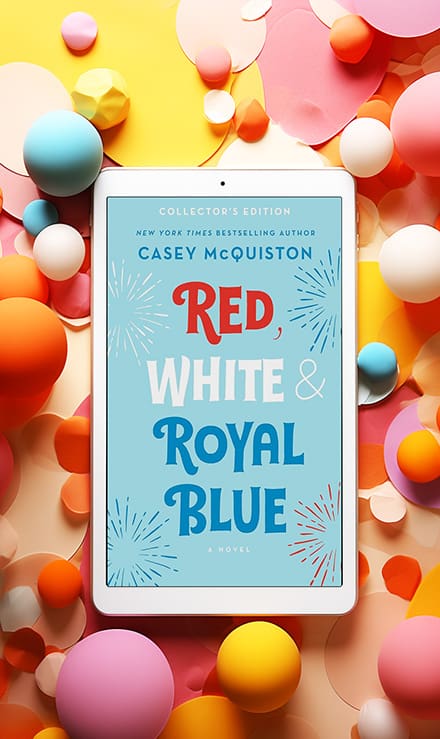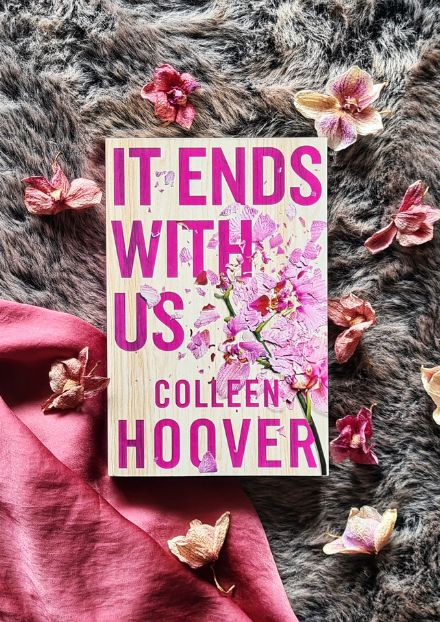YA literature has long operated on two emotional poles.
On one side, there are fluffy, uplifting romance stories that overflow with safe intimacy, gentle humor, and diverse representation of identity.
On the other hand, a surge of trauma-intense narratives, depicting abuse, mental health crises, violence, and power dynamics that are darker and emotionally charged. Here’s how these opposing energies coexist, and why that tension matters.
The Cozy Haven: Wholesome Romance And Representation

Readers increasingly crave comforting, anxiety-free love stories, especially those celebrating diverse identities. Books like Red, White & Royal Blue exemplify the rise of wholesome romance: low stakes, heartwarming intimacy, and culturally nuanced protagonists.
In YA, this translates to uplifting tales with ace, aro, LGBTQ+, and culturally diverse leads, offering readers accessible mirrors of themselves and affirming identity journeys.
These narratives emphasize:
- Self-discovery through connection: where first crushes illuminate identity, rather than catastrophic heartbreak.
- Emotional safety: depictions of healthy communication, consent, and mutual growth.
- Belonging: stories that affirm readers’ cultural, sexual, or neuro-diverse experiences.
They provide a form of gentle, affirming escapism, promoting mental wellbeing, reflection, and joy.
The Dark Depths: Trauma, Toxicity, And Redemption

For contrast, a rising wave of dark romance and emotionally brutal stories has made its mark. Works by Colleen Hoover, It Ends With Us, It Starts With Us, meld tender intimacy with themes of abuse, infidelity, assault, and parental trauma. The subgenre of “femgore” also leans into visceral horror and trauma as a means of catharsis.
Within YA, trauma-centered romance isn’t rare:
- Novels tackling dating violence and emotional abuse, with protagonists traumatized and rebuilding.
- Titles centered on healing from PTSD, assault, and grief, like The Hate U Give or I’ll Give You the Sun.
Why it resonates:
- Catharsis and validation: trauma narratives let readers feel seen and heal alongside characters.
- Heightened drama: A plot twist rooted in trauma heightens emotional engagement.
But it’s a delicate balance. If mishandled, trauma plots can feel exploitative, be criticized as cheap emotional triggers, or as normalizing abusive behavior.
Enjoying this article?
Subscribe to our weekly newsletterBetween The Poles: Readers Speak Out

Laurie Halse Anderson’s breakthrough novel Speak (1999) provides a clear example of readers responding strongly to trauma-centered YA. The story follows Melinda, a high school freshman who becomes mute after surviving a rape at a party; her silence echoes her trauma until she finds healing through art.
Critics and readers alike have praised the novel for portraying Melinda’s emotional journey with raw honesty and a realistic recovery arc, rather than using her trauma as mere plot shock value.
A 2010 review in The New York Times called it “a grittily realistic portrait of sexual violence in high school,” while Publishers Weekly described it as “painful, smart, and darkly comic.” These reactions underline that Speak is respected for its intentional, character-driven approach to trauma, illustrating that readers value narratives that fully acknowledge pain and support healing, rather than exploiting trauma for drama.
RelatedWhy Everyone’s Talking About These Enchanted Romantasy Balls Right Now
Why Both Narratives Matter

This emotional tug-of-war isn’t merely stylistic; it’s culturally driven.
- Post-pandemic anxiety, political instability, and climate stress mean readers crave both comfort and confrontation.
- Social media visibility, especially TikTok and BookTok, has amplified self-advocacy: readers demand honest portrayals, diverse representation, and awareness of triggering content.
- Publishers are responding by both doubling down on wholesome romance and leaning into trauma-laden plotlines that drive high emotional investment.
The result is a broad emotional spectrum: on one end, safe harbors; on the other, emotionally intense survival stories. Both serve different reader needs, offering tools for rest, reflection, or recovery.
RelatedSaucy, Spicy, Sold-Out: Inside London’s Romance Bookshop Everyone’s Raving About
Writing With Integrity: A Balancing Act

For YA authors navigating this emotional spectrum:
- Choose your emotional intent: do you want to heal, transform, or uplift?
- Use trauma intentionally, not as a twist or filler.
- Center consent and agency, especially in depictions of abuse or manipulation.
- Offer recovery, reflection, or context: don’t end at the trauma.
- Use author’s notes or content warnings: let readers engage with awareness and choice.
These principles help ensure emotional depth without exploitation.
Mood Reading: How Teens Choose What To Feel

Librarians are increasingly recognizing that how teens want to feel matters more than what they want to read. In Library Journal’s Readers’ Advisory Survey, the most effective way librarians reported connecting young readers with books was by asking: “What mood are you in?” or “How do you want to feel while reading?”
Rather than starting with genre or format, they begin with emotional intent, seeking stories that will comfort, thrill, distract, or affirm. It’s a shift that reflects how central emotional resonance is to teen reading habits, especially in YA, where feeling is often the point.
In Australia, St Paul’s School Library uses mood-based language to organize and recommend books to students, curating displays around categories like “books that make you cry” or “stories that restore your faith in humanity.”
Librarians report higher engagement when the focus is emotional rather than academic, particularly with students who don’t consider themselves “readers.” This approach normalizes reading for personal reasons, whether teens want to sink into softness or confront something raw and real.
RelatedThe Allure of Dark Romance: Why Readers Are Drawn to Dangerous Love Stories
All of this supports a growing consensus: teens are mood reading more than ever, not just for fun or plot, but as a way to process their own lives. That’s what makes YA’s emotional spectrum so powerful. Whether a book delivers the warmth of a sweet, romantic escape or plunges deep into trauma and survival, the stories that resonate most are the ones that feel right in the moment.
YA’s emotional spectrum isn’t a flaw; it’s the genre’s greatest strength. The tug-of-war between fluffy romance and raw trauma reflects not just what authors want to explore, but what teen readers are actively searching for. Whether they’re reaching for gentle, affirming love stories or emotionally intense narratives about survival and healing, teens are reading based on how they want to feel, a fact librarians and educators are increasingly using to guide recommendations.
The rise of mood reading reinforces this: teens aren’t just choosing books by trope or trend, but by emotional alignment. A book’s tone, whether cozy or cathartic, has become just as important as its plot. And when authors handle those emotions with care, the result is a reading experience that resonates far beyond the final page.
What defines YA today isn’t one dominant style; it’s the full range. It’s the ability to hold softness and intensity side by side. As long as writers continue to respect that emotional complexity, and as long as teens are given the space to read according to what they need in the moment, YA will remain one of the most emotionally honest genres out there.














